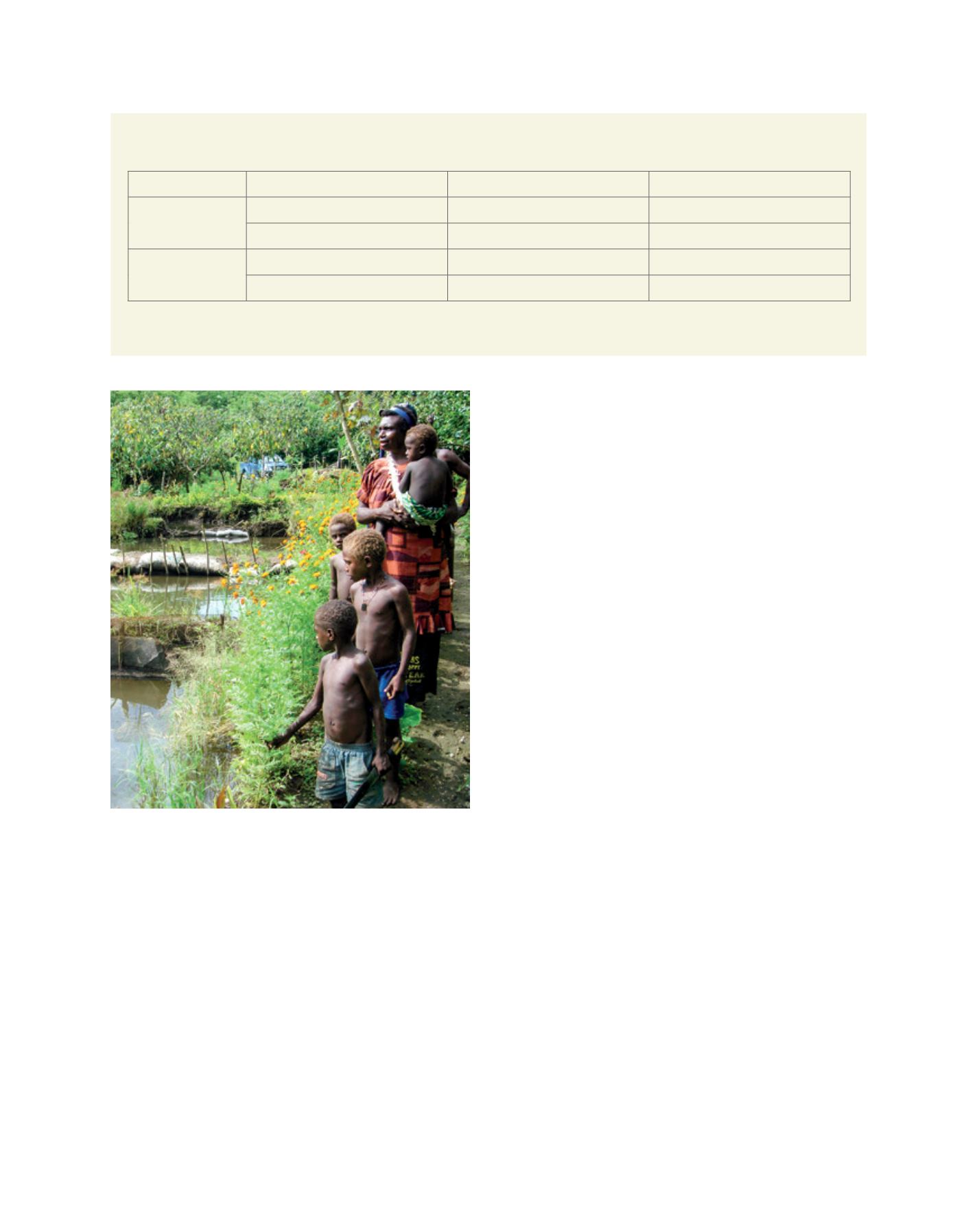

[
] 59
specifically in countries with a strong tourism or mining
industry such as Fiji, Vanuatu and Papua New Guinea,
where high quality aquaculture products are imported in
large quantities every week from Asian markets.
Community-based aquaculture in the Pacific region
comprises diverse systems of farming plants and animals
in inland and coastal areas, and often complements other
food production systems. In the context of the rural poor
or isolated communities of the Pacific region, community-
based aquaculture complements catches from traditional
capture fisheries. The capture or culture of aquatic species
forms the basis of food security in Pacific Island countries
and territories, enabling the use of livestock or cultured
fish as a source of income generation. Community-based
aquaculture is an attractive and important component of
rural livelihoods in situations where increasing population
pressures, environmental degradation or loss of access limit
catches from wild fisheries.
Pacific women play a very important role in community-
based aquaculture. It is a family activity where women and
children are involved. However, formal assessments to quan-
tify the involvement of women and children in aquaculture
are lacking. A study funded by ACIAR is underway in Fiji,
Kiribati, Samoa and Vanuatu to determine the role of women
and children in aquaculture production and marketing, with
the intention that the findings for this assessment will be
easily transferred to other Pacific countries.
SPC continues to assist its 22 member countries in
addressing capacity constraints and knowledge gaps that
are related to scaling up promising aquaculture industry
sectors, and the factors relating to greater uptake of aqua-
culture farms among rural communities. The technical
assistance approach comprises relatively small but targeted
interventions working with species that are already being
produced, or which have known potential. The inten-
tion is to enable better understanding of the future role
of aquaculture at community level in meeting food secu-
rity requirements and providing livelihoods, in response to
population growth, increasing demands for cash income and
urbanization. Rather than merely supplement the produc-
tion of fish from capture fisheries through aquaculture, the
regional approach also explores ways for aquaculture to be
integrated with coastal fisheries management and, where
possible, provides incentives for communities to support
better coastal fisheries management. It is hoped that under
these interventions SPC’s contribution will have a positive
impact on:
• increasing production of freshwater fish available
to communities
• improving profitability and sustainability of community-
based aquaculture practices
• improving community-based fisheries management
through community-based aquaculture interventions,
particularly in the application of community-based
fisheries management systems
• gaining a better understanding of how community-
based aquaculture can improve the status of women and
children in the community.
Freshwater tilapia fish and freshwater prawn production by community-based farmers in Santo Island, Vanuatu, 2012-2013
Source: Glen Alo, Vanuatu Fisheries Department
Year
Total production (kg)
Total value (US$)
Tilapia
2012
517.5
2,530
2013
1,049
5,594
Freshwater prawns
2012
350
3,154
2013
351
3,020
Community-based aquaculture complements catches from traditional
fisheries and forms the basis of food security in Pacific Islands
Image: FAME, SPC
D
eep
R
oots
















